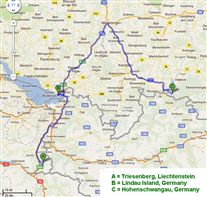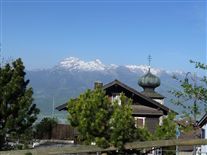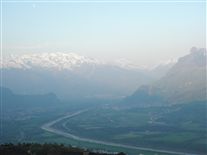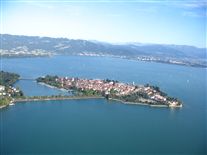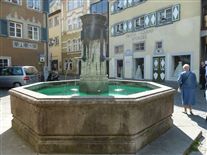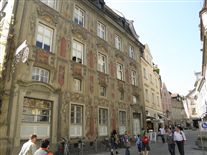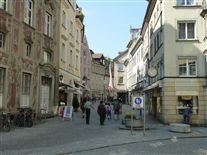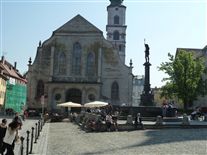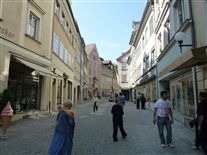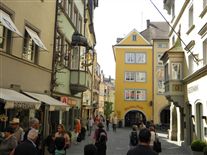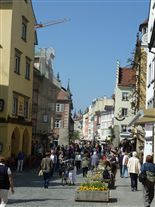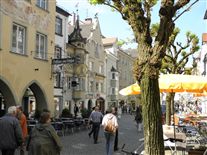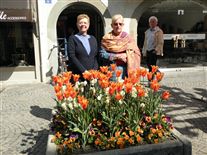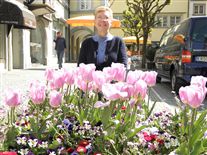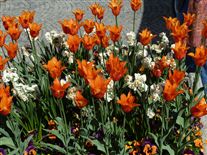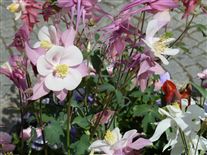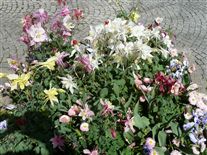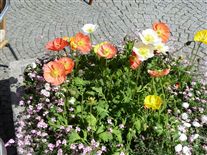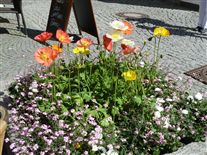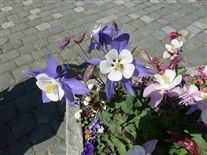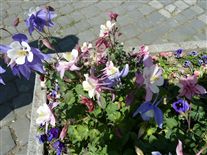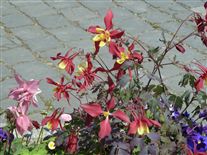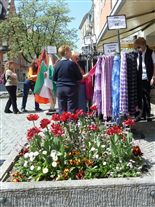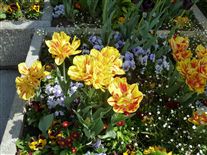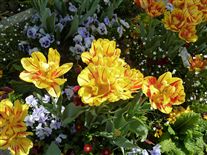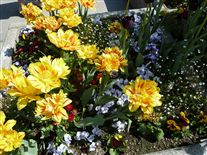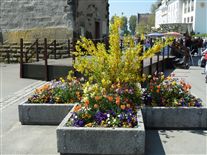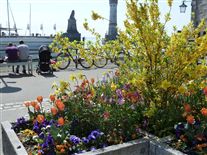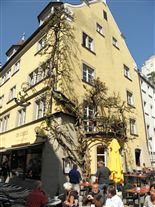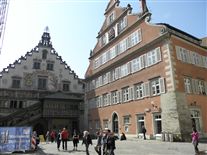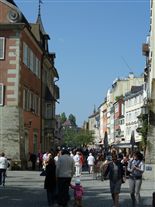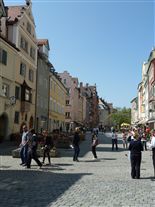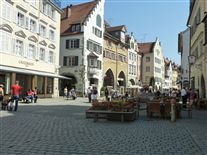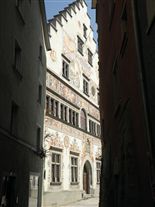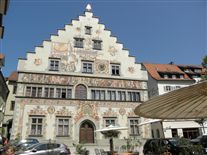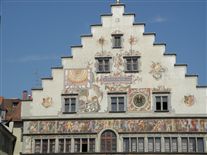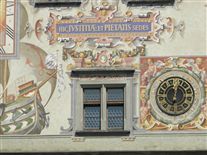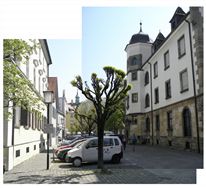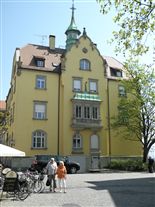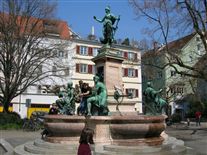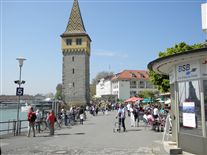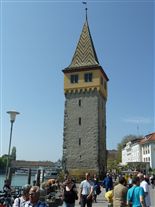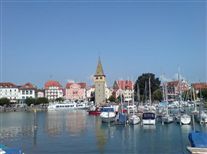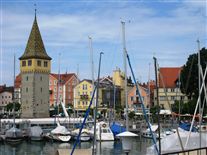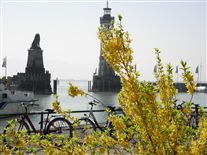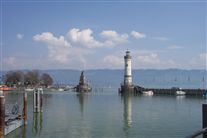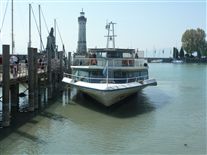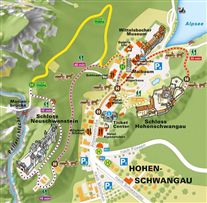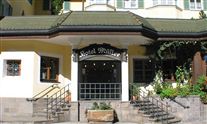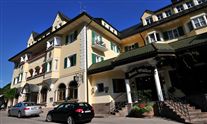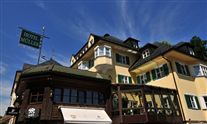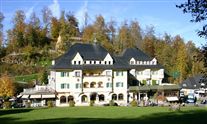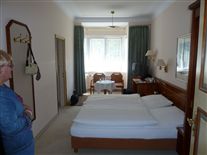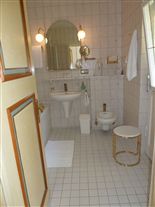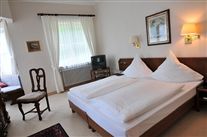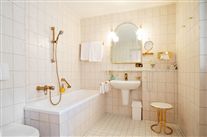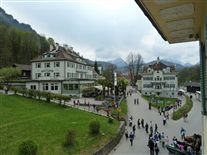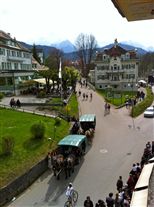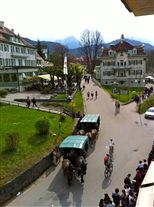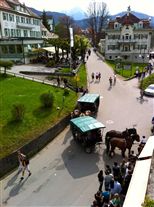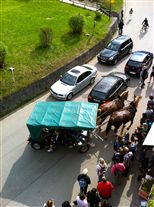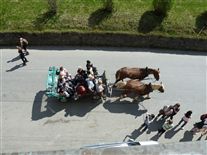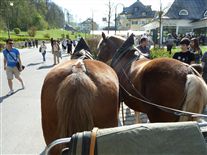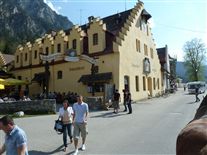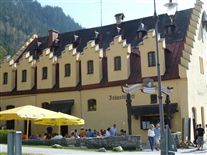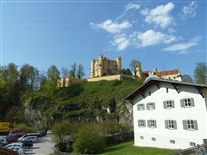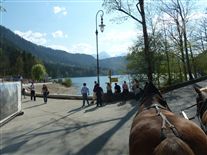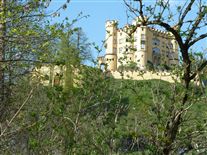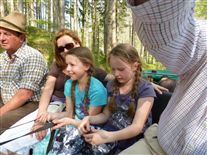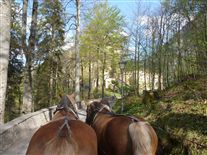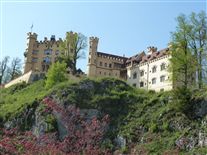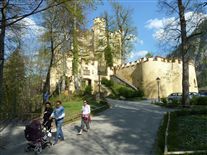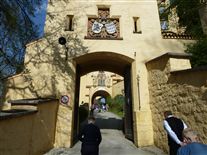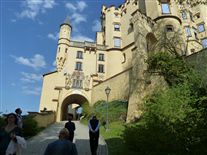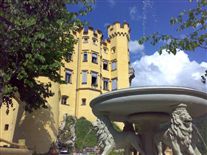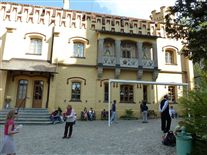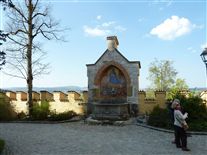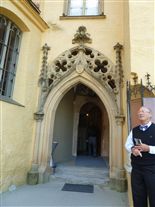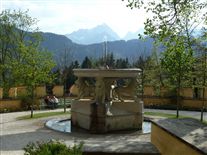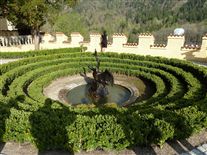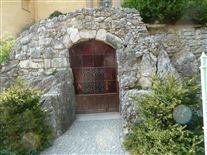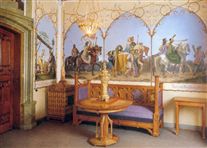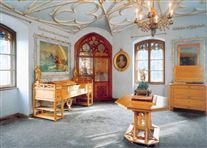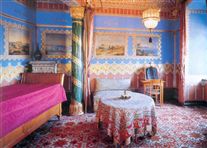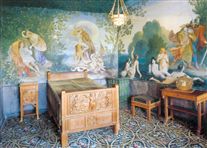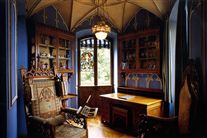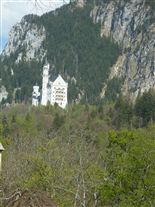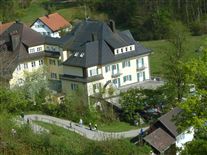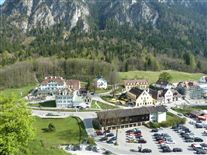Lindau_Insel_Luftbild3.jpg
Lindau Island - Click 'Details' for more information.
Lindau is a Bavarian town and an island on the eastern side of Lake Constance, the Bodensee. It is the capital of the Landkreis or rural district of Lindau. The historic city of Lindau is located on an 0.68-square-kilometre (0.26 sq mi) island which is connected with the mainland by bridge and railway.
The name Lindau was first mentioned by a monk from St. Gallen in a document of 882, stating that Adalbert, count of Raetia, had founded a nunnery on the island. However remains of an early Roman settlement dating back to the 1st century have been found in the district of Aeschach.
In 1180 the St. Stephan's church was founded. In 1224 the Franciscans founded a monastery on the island. In 1274/75 Lindau became an Imperial Free City under King Rudolph I. In 1430, about 15 of the town's Jews were burned at the stake after being accused of murdering a Christian child. In 1528, Lindau accepted the Protestant Reformation. The city first followed the Tetrapolitan Confession, and then the Augsburg Confession. After the Thirty Years' War, in 1655 the first Lindauer Kinderfest (children's festival) was held in memory of the war time.
After the dissolution of the Holy Roman Empire, Lindau lost its status as an Imperial Free City in 1802. The city went to Karl August von Bretzenheim who gave the city and monastery to the Kingdom of Austria in 1804. In 1805 Austria returned the city to Bavaria.
In 1853 a causeway was built to connect the railway from Munich to the island. In 1856 the city built a new harbour with its characteristic landmark, the lion sculpture, together with Bavaria's only lighthouse.
In 1922 the independent districts of Aeschach, Hoyren and Reutin merged with the town of city. After World War II Lindau fell under French administration. In 1955 Lindau again returned to Bavaria.
Lindau is located near the meeting point of the Austrian, German and Swiss borders. It nestles on the lake under Pfänder mountain. Lindau is popular with sightseers and holidaymakers for its medieval city centre and pleasant location on Lake Constance. Since 1951, the Nobel Laureate Meetings at Lindau attract many Nobel prize winners to Lindau every year. A congress of medical physics is also held yearly. The casino owned by the state of Bavaria is a further attraction.
4a9bc6e184.jpg
Map of Hohenschwangau - Click 'Details' for more information.
Hohenschwangau is a village in the municipality of Schwangau, Ostallgäu district, Bavaria, Germany.
It is located between Schloss Neuschwanstein and Schloss Hohenschwangau and is visited by about 2 million people annually, where they start tours to the former royal palaces. The village is dominated by car parks, restaurants, guesthouses, hotels and souvenir shops.
Hohenschwangau is bordered by the Alpsee in the West.
Photos_-_2045.jpg
Hohenschwangau Castle - Click 'Details' for more information.
Hohenschwangau Castle or Schloss Hohenschwangau (lit: High Swan County Palace) is a 19th century palace in southern Germany. It was the childhood residence of King Ludwig II of Bavaria and was built by his father, King Maximilian II of Bavaria. It is located in the German village of Hohenschwangau near the town of Füssen, part of the county of Ostallgäu in southwestern Bavaria, Germany, very close to the border with Austria.
Hohenschwangau Castle was built on the remains of the fortress Schwanstein, which was first mentioned in historical records dating from the 12th century. A family of knights was responsible for the construction of the medieval fortress, and it served as the seat of the local government of Schwangau. In 1523, the schloss was described as having walls which were too thin to be useful for defensive purposes. After the demise of the knights in the 16th century the fortress changed hands several times. The decay of the fortress continued until it finally fell into ruins at the beginning of the 19th century.
In April 1829 Crown Prince Maximilian (the later King Maximilian II of Bavaria) discovered the historic site during a walking tour and reacted enthusiastically to the beauty of the surrounding area. He acquired the ruins - then still known as Schwanstein - in 1832. In February 1833 the reconstruction of the Castle began, continuing until 1837, with additions up to 1855. The architect in charge, Domenico Quaglio, was responsible for the neogothic style of the exterior design. He died in 1837 and the task was continued by Joseph Daniel Ohlmüller (died 1839) and Georg Friedrich Ziebland.[1] Queen Marie created an alpine garden with plants gathered from all over the alps.
Hohenschwangau was the official summer and hunting residence of Maximilian, his wife Marie of Prussia and their two sons Ludwig (the later King Ludwig II of Bavaria) and Otto (the later King Otto I of Bavaria). The young princes spent many years of their adolescence here. The King and the Queen lived in the main building, the boys in the annex.
King Maximilian died in 1864 and his son Ludwig succeeded to the throne, moving into his father's room in the castle. As Ludwig never married, his mother Marie was able to continue living on her floor. King Ludwig enjoyed living in Hohenschwangau, especially after 1869 when the building of his own castle, Neuschwanstein, began only a stone's throw from his parental home.
After Ludwig's death in 1886 Queen Marie was the castle's only resident until she in turn died in 1889. Her brother-in-law, Prince Regent Luitpold of Bavaria lived on the 3rd floor of the main building. He was responsible for the electrification in 1905 and the installation of an electric elevator. Luitpold died in 1912 and the palace was opened as a museum during the following year.
During World War I and World War II the castle suffered no damage. In 1923 the Bavarian Landtag recognised the right of the former royal family to reside in the castle. From 1933 to 1939 Crown Prince Rupprecht of Bavaria and his family used the castle as their summer residence, and it continues to be a favourite residence of his successors. In May 1941, Prince Adalbert of Bavaria was purged from the military under Hitler's Prinzenerlass and withdrew to the family castle Hohenschwangau, where he lived for the rest of the war.
More than 300,000 visitors from all over the world visit the palace each year. The castle is open all through the year (except for Christmas). Opening hours are 9 a.m. to 6 p.m. (April through September) and 10 a.m. to 4 p.m. (October through March). Guided tours are provided in German, English, French, Italian, Spanish, Russian, Czech, Slovenian and Japanese. Self-guided tours are not available.
Berchta_Room_015a199297.jpg
Berchta Room - Click 'Details' for more information.
The 'Berchta Room', used to be the Queen's writing room. Surrounded by beautiful painted ornaments with climbing plants and twines, images tell the myth of the birth of Karl the Great in the Reismühle near Gauting.
Dressing_Room_ba42762fe5.jpg
The Hohenstaufen Room - Click 'Details' for more information.
The 'Hohenstaufen-Room' used to be the dressing room of King Maximilian II and King Ludwig II. It also was Ludwig's music room . Paintings on the walls illustrate special events from the era of the 'Staufer' selected by Maximilian.
Oriental_Room_0d0da438cb.jpg
The Oriental Room - Click 'Details' for more information.
The 'Oriental Room' used to be Queen Mary's bedroom. This room has been decorated in an oriental style in memory of Maximilian's trip to Greece and Turkey in 1832/33.
Tasso_Room_51ae7ea680.jpg
The Tasso Room - Click 'Details' for more information
The 'Tasso-Room' was the bedroom of King Maximilian II and King Ludwig II. All walls of this room are beautifully painted. The paintings tell the story of Armida and Rinaldo according to Torquato Tasso's epic poem 'Jerusalem Delivered'.
